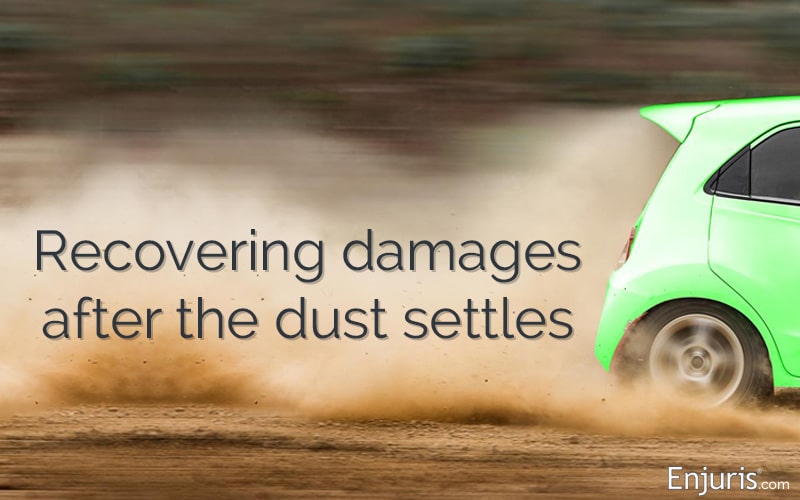
According to research from the AAA Foundation for Traffic Safety, a hit-and-run incident happens approximately every 43 seconds on America’s roads.
When the responsible party is identified, the process of recovering damages is relatively straightforward. Victims can file an insurance claim or initiate a personal injury lawsuit against the perpetrators.
But what happens when the hit-and-run driver vanishes without a trace?
Here are five potential avenues to recovery, even when the hit-and-run driver remains unidentified.
1. Uninsured motorist coverage
Hit-and-run victims can recover damages by filing a claim using their own uninsured motorist (UM) coverage. This type of insurance is designed to cover injuries sustained in accidents caused by drivers who don’t have insurance or cannot be identified.
However, UM coverage is optional in most states, so you’ll need to check with your insurance company to find out whether you have the coverage.
Some states allow you to “stack” UM coverage limits within a single-car insurance policy. For example, if you have two vehicles on the same policy, each with $10,000 UM coverage, stacking would allow you to increase your UM limit to $20,000 per accident. In other words, if you were hit by a hit-and-run driver, your insurer would cover damages up to $20,000.
It’s important to keep in mind that some states require stacking, while others prohibit stacking. What’s more, even in states that allow stacking, some insurers insert anti-stacking clauses in their policies.
2. Health insurance
While it may seem obvious, many people overlook the role of their health insurance in covering medical expenses following a hit-and-run incident.
If you’ve sustained injuries, your health insurance can cover immediate medical costs. However, you may still be responsible for deductibles and copays, depending on your plan.
It’s a good idea to keep track of your medical expenses following a hit-and-run incident. If the police locate the driver in the future, you’ll need this documentation when filing an insurance claim or personal injury lawsuit.

Printable daily medication log template helps you track your medicines and side effects
Download in PDF format

Damages worksheet to track expenses for your injury claim (medical treatment, property damage, lost wages, prescriptions)
Download in PDF format

Sample accident journal/diary to help you document the effect on your daily life
Download in PDF format
3. Collision coverage
Collision coverage covers damage to your vehicle, regardless of who was at fault for the crash. If your car was damaged in a hit-and-run crash, your collision coverage could be invaluable. However, there are two important caveats:
- Optional: Collision coverage is optional to most auto insurance policies, so you’ll need to check with your insurer to see if you have collision coverage.
- Deductible: It’s important to weigh the cost of your deductible (as well as the chance your premiums will increase) against the repair costs. In some cases, it might be more economical to handle minor repairs out-of-pocket.
Find out when to handle a car crash without involving insurance.
4. Civil lawsuit against a third party
In certain situations, a third party might be partially responsible for your accident. For example, if the hit-and-run occurred due to a malfunctioning traffic light or poor road conditions, the municipality could be held liable.
An experienced car accident attorney can help you determine whether a third party may be liable or partially liable for your damages.
5. Crime victim reparations
Several states have created victim compensation programs. These programs are designed to assist victims of crimes, including hit-and-run accidents, in recovering some of their losses. While these programs don’t typically cover property damage, they may be able to help with medical bills, counseling, and lost wages.
Each state has its own criteria and limits when it comes to crime victim compensation programs. To find out whether our state has a crime victim compensation program, check your state government website or contact the National Association of Crime Victim Compensation Boards.
While the avenues mentioned above offer potential relief, it’s always a good idea to consult with a personal injury attorney who can guide you through the process in your state, ensuring you receive the compensation you deserve.
Remember, while the aftermath of a hit-and-run can be overwhelming, you’re not alone. With the right knowledge and resources, you can find a path to recovery.
